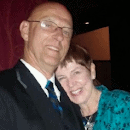The Best Way to Calculate Estimates for Residential Paint Jobs
Do you have an effective process for estimating new paint jobs? If you’re a painting contractor, understanding your pricing is critical in order to win bids and bring your projects in on budget. Stop guessing and start using documented data from the field to develop accurate estimates that meet your budget more often and keep you competitive in the marketplace.
If you were to log on to most painter’s chat rooms, whether they’re Facebook or on blogs, one of the most common questions you will see is what is the best way to calculate pricing for a residential paint job. If you’re a contractor, understanding your pricing is critical in order to win bids and bring your projects in on budget, but all ways are not at all created equal. The first thing you really have to understand is what you’re in the business of doing. Most people think that they paint for a living when, in fact, your true job as the owner of a painting business is to buy labor wholesale and to sell it retail. That means you buy lots of hours from your painters and you sell just a few of them to the end-user in what we would call projects.
It’s critically important that you understand exactly how far an hour of a painter’s labor goes on any given surface with any given applicator just like you know how far paint goes. On the side of every can there is a coverage rate and that’s how you calculate how many gallons you need. Guess what? Every painting contractor has a coverage rate for painting a specific surface. For example, brushing and rolling interior walls might be 120 square feet an hour so when you walk into a room you simply measure all the square footage of the walls to be painted.
Develop Production Rates
Let’s say it’s 1200 square feet. Well, at 120 square feet per hour brushing and rolling, that tells you that 10 labor hours are needed to conduct that work. Really simple. That’s called a production rate. Production rate is how long it takes a painter to paint a given object, like a door or window, or how fast a painter can paint, typically within an hour, any given surface. It could be linear feet of baseboard, square footage of siding. It could be the flooring of a deck, but what you have is a production rate for every one of those surfaces depending on whether you’re brushing, rolling or spraying.
Understand Pay Rate, Charge Rate, and Material Mark-Up
Once you get those established, the next thing that you need to understand other than the production rate is your charge rate, your billing rate, and your material mark-up rate. Actually, let me back up there. You need to understand your pay rate, your charge rate, and your material mark-up. Let’s start first with the pay rate. Pay rate is simply what you pay your painters on average. Let’s say that you pay $115, another one $1750, and another one $20, your average pay rate is going to be $1750.
Let’s say with burden, such as W2 taxes, et cetera, worker’s compensation, general liability, we round that up to 20. That’s your pay rate. Typically, what you want to do is double your pay rate in order to get your charge rate. If your all-in pay rate is $20 an hour, you would charge $40. If it’s $25, you would charge $50. At the end of the day, what you really want to do is to find out what the market will bear for a maximum ethical charge rate at the optimal sales closing rate. Now, we can talk about sales in another conversation.
Now we have a production rate which is going to let us, by division and multiplication, just simply measuring and then dividing or multiplying by the production rate how many labor hours we need. We know what our charge rate is to the client so all we have to do is multiply, for example, 100 hours times $50 an hour for $5,000 in labor. What do you do about the materials? It’s real simple. You simply take your projected material cost and then you multiply it by a mark-up that you feel comfortable with.
Could be 20%, could be 50%, really depends on how deep of a discount you have negotiated with the paint store, and how much of those savings you want to pass along to the client, and how much you feel you can ethically keep for negotiating those deals with the vendor plus acquiring the materials, managing them, disposing of them, picking them up, and all of the logistics involved.
Conclusion
To recap, the very best way to generate your estimates accurately for residential painting projects is to number one, develop production rates. It’s as simple as measuring the square footage of a surface, setting a clock, painting, and then seeing what your average pace is in square footage or linear footage as you paint. Just like if you wanted to know how fast you ran a mile, you’d just run a mile and set a clock.
Number two, you really need to understand your charge rate, which is what you charge the clients, your pay rate, what you pay your painters, and finally your material mark-ups. Your job is not to guess, it is not to use experience, it is to use documented data from the field to come up with very accurate measurements so that there’s very little variation in the estimates that you write so you can come in budget more often and you can be competitive in the marketplace while watching and adjusting your charge rate and your sales strategies in real-time.
That’s how you end up generating as much cashflow to you personally as the owner as is possible. I’m Brandon Lewis with Painter’s Weekly and Painters Academy. If you would, click below to subscribe, we would love to have you as a subscriber to this channel. Also, if this has been helpful to you, forward these resources to a painter that you know could benefit from them. Talk to you next time.
2 Comments
Leave a Comment
The 5 Keys for Success in ANY Economy

Discover the key to unlocking the hidden income potential in your painting business.
Hear What Other Members are Saying:

Jim and Lorraine
“Our first campaign reached $60,041.98! That's a huge percentage of our annual sales! You don't pick the peach orchard just one time. Different peaches ripen every day. Thanks for encouraging us to keep after it!”

Eric
“15 requests for quotes and closed and/or completed $23,000 of work and I still have a few more to do. Conservatively this campaign will net $25,000 in found money in the first 45 days! Thanks Brandon!”

Torlando
“This year has been the biggest year of growth for us. We're double where we were last year. I realized the real money in this business is in the marketing of the services - not the doing of the services.”
The 5 Keys for Success in ANY Economy
Discover the key to unlocking the hidden income potential in your painting business.

Great comments I’ve been in the business 50 years and was wondering should I take my Painters rate the pay rate and double it from my charge rate I felt like that was good you confirm that so I paid my Painters 20 an hour and I charge 45 that I believe is all the market will bear. So I am thanking you for these little mini seminars keep them coming Dale Cummings Cummings painting and construction, Inc. out of Dawsonville Georgia you can Google my name Dale Cummings-Berry academy
Dale, I think you even have more room in your margins. It’s not just what you charge, it’s the percentage of repeat and referral clients in your lead mix coupled with the persuasiveness of your sales process (we call ours the PowerPaint Presentation Process.) Done right, I can’t see any reason you could not get $50-55 in Dawsonville. Good luck and thanks!